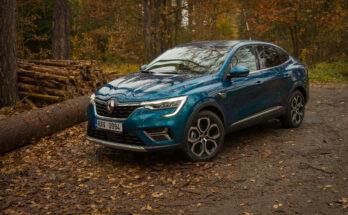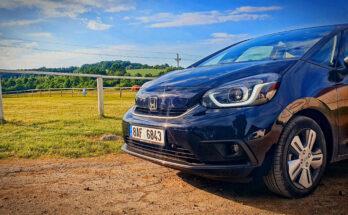According to their representatives, the future of the Porsche car company is in plug-in hybrids or electric cars . The prototype of these cars is the Mission E concept, the first ever four-seater Porsche with an electric drive.
The Mission E uses a total of two electric motors, one on each axle, while only the rear one is permanently on during slower driving. The automaker does not provide individual performances, but overall, the sedan can produce 600 horsepower , enough to accelerate from 0 to 100 km/h in 3.5 seconds and from 0 to 200 km/h in less than 12 seconds. Both engines have the automatic distribution of torque between the individual wheels Porsche Torque Vectoring , there is also rotation of the wheels of the rear axle. Despite the higher weight, the Porsche Mission E can handle the Nordschleife in under eight minutes , which is also thanks to the ability to slow down and accelerate again (a problem with some current electric cars). The lithium-ion battery with a capacity of 95 kWh, located under the floor, occupies the full length between the front and rear axles, the weight is thus evenly distributed between both axles, and is sufficient for a range of approximately 500 kilometers . Completely new is the charging system, working with a voltage of 800 V. This brings a shorter charging time and lower weight, because lighter copper cables with a reduced cross-section are sufficient to transfer the energy. So if you have the required connection, you can have 80 percent battery capacity in just 15 minutes, which is a new record among electric cars. Alternatively, the car can also be connected to a 400 V charger or get energy inductively in the garage next to the house.
Only 130 centimeters high, the snow-white body is made of a functional mixture of aluminum, steel and plastic reinforced with carbon fibers, and its design, despite the electric drive, bears all the typical hallmarks of Porsche cars . Aerodynamics had the main word in its creation. The integrated air channels thus improve the flow around the wheels, the outlets on the side surfaces reduce the excess pressure in the wheel arches and thus the aerodynamic lift. It goes without saying that there are aerodynamic inlets and outlets along the entire length of the body, or more efficient cameras instead of mirrors , the image of which is transmitted to the lower corner of the windshield. In addition to the air flow, the LED front lights in particular attract attention, the units of which are grouped around a flat sensor for assistance systems, the borders of which act as blinkers. Mudguards, a low hood, a recess in the roof or the side lines of the windows – these elements refer to the electric sedan with oppositely opening doors to the legendary 911 (does Porsche want to give us a hint?). At the back, the focus is mainly on the backlit three-dimensional Porsche inscription under the band of LED taillights. The rapidly sloping window and extended fenders are characteristic. They hide 22-inch carbon wheels, the front rims are an inch smaller.
The cabin translates the current elements of the German automaker's models into the future , with openness, clean shapes, clear architecture, driver orientation and practicality as the main motifs. The four passengers have individual seats, which were modeled after the shells of racing models. The instrument panel consists of five alarm clocks (Connected Car, Performance, Drive, Energy and Sport Chrono functions), but these are not analog, but from organic OLED diodes. For many, a great science fiction is the eye tracking system , which uses a camera to recognize which device the driver is looking at. By pressing a button on the steering wheel, the driver activates the relevant menu and can navigate in it – also in cooperation with gaze recognition and manual confirmation. Thanks to the so-called parallax effect , the driver's sitting position and posture are also monitored. If he sits lower, higher or leans to the side, the 3D view of the alarms will react and move with him. The main information about the car's functions (media, navigation, air conditioning or contacts) is carried by the holographic display , which extends to the passenger. It can only be controlled using gestures. There is then a second display on the central tunnel, controlled by touch. Thanks to the Porsche Car Connect function, it is also possible to configure the vehicle from the outside with a tablet.
Source: Porsche



